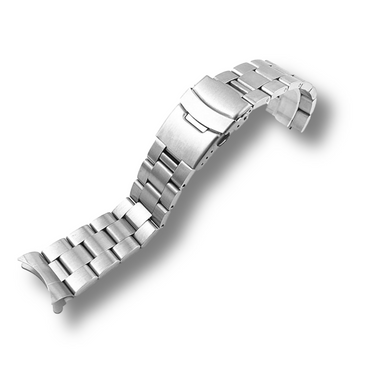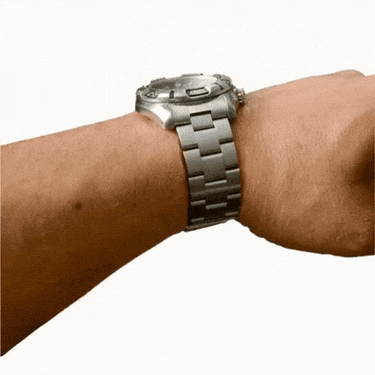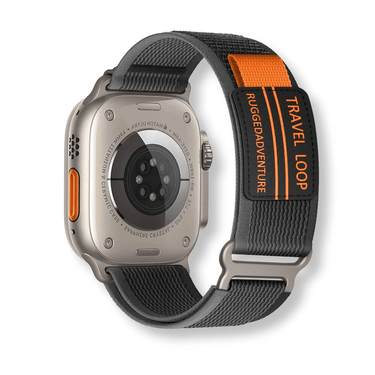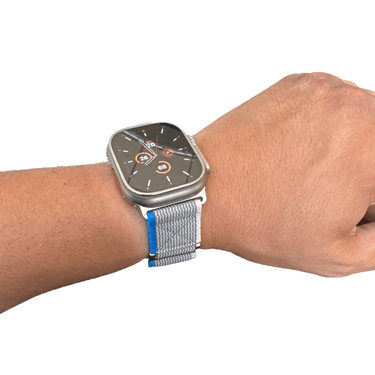Vintage watchbands have a timeless appeal that never goes out of style. Their charm lies in their ability to evoke a sense of nostalgia and connect us with an era gone by. In this article, we will explore the history of vintage watchbands, the different types available, and how to choose the perfect one for your watch. Finally, we will discuss how to care for your vintage watchband to ensure it lasts for years to come.
A Brief History of Vintage Watchbands
Early Developments
The history of watchbands dates back to the 16th century when wristwatches were first invented. Initially, wristwatches were worn exclusively by women, and their bands were made of delicate materials such as silk, gold, and silver. Men typically carried pocket watches on chains.
Evolution of Vintage Watchbands
As wristwatches gained popularity among men in the early 20th century, watchband designs began to evolve. The materials used became more robust and versatile, while the styles diversified. The classic vintage watchbands we know today can be traced back to the mid-20th century, when iconic timepieces such as the Rolex Oyster Perpetual and the Omega Speedmaster featured distinctive band designs.

Types of Classic Vintage Watchbands
Leather Bands
Leather bands are a classic choice for vintage watchbands. They come in various colors and finishes, from smooth calfskin to textured alligator or crocodile. Leather bands add elegance and sophistication to any timepiece, making them suitable for formal occasions and daily wear alike.
Metal Bracelets
Stainless steel, gold, and silver bracelets have been popular choices for vintage watchbands since the mid-20th century. They offer a sleek, modern look while maintaining a classic feel. Metal bracelets are durable and can withstand daily wear, making them a practical choice for many watch enthusiasts.
Canvas and Fabric Straps
Canvas and fabric straps, such as the iconic NATO strap, offer a casual and sporty look for vintage watchbands. They are lightweight, comfortable, and often come in an array of colors and patterns. Fabric straps are an excellent option for those who want a more relaxed, laid-back style for their timepiece.
Exotic Materials
For a unique and luxurious touch, some vintage watchbands are made from exotic materials such as snakeskin, ostrich, or sharkskin. These bands are less common and can add a distinctive flair to your timepiece.
How to Choose the Right Vintage Watchband
Matching Your Watch Style
When selecting a vintage watchband, consider the style of your watch. For dress watches, a leather band or metal bracelet is an excellent choice. For more casual or sporty watches, consider a canvas or fabric strap. If you have a unique timepiece, you might opt for an exotic material to complement its design.
Sizing Your Watchband
Proper sizing is crucial for a comfortable and secure fit. When choosing a vintage watchband, make sure it matches the lug width of your watch. Additionally, consider the length of the band and how it will fit around your wrist. Some bands offer adjustable sizing, which can be especially helpful for finding the perfect fit.
Prioritizing Comfort
A comfortable watchband is essential for daily wear. Consider the materials and design of the band to ensure it will be comfortable on your wrist. Leather bands and fabric straps tend to be more comfortable than metal bracelets, which can be heavier and colder on the skin. However, some people may prefer the feel of a metal bracelet. It's essential to choose a watchband that suits your personal preferences and comfort level.
Considering Durability
When selecting a vintage watchband, consider its durability. Metal bracelets and certain leather types are known for their longevity, while fabric straps may wear out more quickly. Keep in mind how often you plan to wear your watch and in what situations, as this can impact the lifespan of your watchband.

Caring for Your Vintage Watchband
Leather Band Maintenance
To keep your leather watchband in top condition, avoid exposing it to water, as moisture can damage the leather. Wipe the band with a dry cloth regularly to remove dirt and oils from your skin. You can also use a leather conditioner to keep the band soft and supple.
Metal Bracelet Care
Clean your metal bracelet regularly with a soft cloth and mild soap, ensuring to rinse it thoroughly and dry it completely. Avoid exposing your metal bracelet to harsh chemicals, as they can cause discoloration and corrosion.
Fabric Strap Upkeep
Fabric straps can be hand washed or machine washed, depending on the material. Be sure to remove the strap from your watch before cleaning. Allow the strap to air dry, and avoid exposing it to direct sunlight, as this can cause fading.
Conclusion
Classic vintage watchbands are a timeless accessory that can elevate the style of any timepiece. By understanding the history and types of vintage watchbands, as well as how to choose the right one for your watch, you can ensure a perfect match. With proper care, your vintage watchband will remain a cherished part of your collection for years to come.
FAQs
-
What is the best way to store a vintage watchband when not in use?
Store your vintage watchband in a cool, dry place away from direct sunlight. Consider using a watch roll or a storage box with compartments to keep your bands organized and protected. -
Can I swap out my vintage watchband for different occasions?
Absolutely! Many watch enthusiasts enjoy having a collection of watchbands to switch out for various occasions, outfits, or moods. -
How often should I replace my vintage watchband?
The frequency of replacement depends on the type of band, its quality, and how often you wear your watch. Generally, leather bands can last for several years, while fabric straps may need replacing more frequently. -
Are vintage watchbands compatible with modern watches?
Yes, many vintage watchbands can be used with modern watches, as long as the lug width and band length are compatible. -
Can I get a custom vintage watchband made for my timepiece?
Some companies and artisans specialize in creating custom watchbands, including vintage styles. Be prepared to provide specific measurements and details about your watch and desired band


























